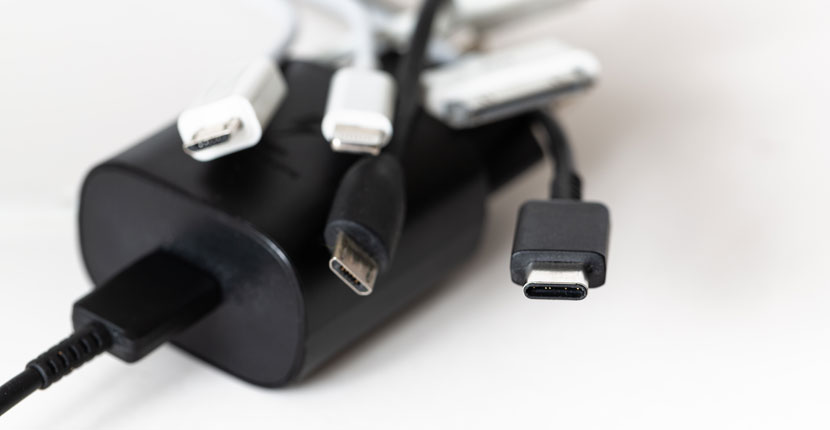Differences Between USB-C and Lightning
- by Joe Weber - updated on 12/15/2022

Everywhere you look it's either Lightning or USB-C being used in devices. Other than Lightning being an Apple connection, what's the difference? Let's break down these two popular cables to determine which of the two is the superior data and power connection.
Durability
Both USB-C and Lightning are closely matched when it comes to ease of use and durability. In the early days of lighting cables, there were concerns of durability issues with Apple's proprietary power cord. After some design changes, these concerns are no longer actually a concern and the Lighting cable of today is just as durable as any other cable out there.
Other benefits of both USB-C and Lightning:
- Both have reversible ends. You cannot connect your device the wrong way.
- Both are available from numerous retailers and come in many different lengths and colors to match your mood.
There is some debate surrounding which type creates a more secure connection when connected to a device. This is largely a preference issue and both connection types create a stable, secure connection.
Power
With fast charging on the rise, it's important to know how well your connection can handle the power demands, or even how much power it can deliver.
USB-C has standard support for 100W/3A with support for up to 240W/5A which makes it a clear choice for fast charging. This coupled with standard support for fast-charging USB Power Delivery makes it the ideal choice for fast-charging applications.
Lighting on the other hand only supports a maximum current of 12W/2.4A. In order to support high delivery speeds for today's fast charging Apple includes a USB-C to Lightning cable with most products that can be used in conjunction with a 20W fast charging power adapter to provide fast charging for devices.
Device Compatibility
The Lightning connection is designed by and used only in Apple products starting with the iPhone 5. Replacing the outdated Apple 30-Pin connector. USB-C is widely used across all brands and is used in a variety of devices from gaming consoles, to smartphones, headphones and more.
It has been announced that Apple will begin using USB-C in their iPhones in the coming years. While the new law in the European Union gives all companies until 2024 to comply, it is rumored that Apple will start using USB-C with the upcoming iPhone 15 in 2023. With the new law, USB-C is quickly becoming the new standard for charging and data connectivity.
Data Transfer Rates
USB-C comes packed with USB4 support making it the clear winner here as it supports data transfer speeds up to 40 Gbps (gigabits per second) while the Lightning connection only supports up to 480 Mbps (megabits per second) with USB 2.0. That's roughly an 80x faster rate with the USB-C connection. Even the very first generation of USB-C cables introduced in 2014 supported speeds of 5Gbps; light-years faster than the Lighting cable.
One part of the drastic difference between the two is there hasn't been much about the Lightning connection that has changed since its introduction in 2012. Even though that sounds like it could be a negative, the fact that it hasn't changed much allows it to work with all Apple products that accept the Lightning connection from the iPhone 5 to the iPhone 14.
The other part is USB-C was introduced a couple of years after Lightning and had newer technology to start with. It also had the benefit of being widely used in many computers as a replacement for the standard USB-A that has been part of the computer world for decades, which needed higher data transfer rates for large files, images, music and more.
The Bottom Line
Setting aside the durability of both connections being almost even USB-C is clearly the superior connector across the board. In terms of power delivery USB-C dwarfs Lightning with standard 3A delivery and support for super-fast charging right out of the box. USB-C was originally designed for connections between devices and computers with a greater focus on data, not charging which allows a much faster data transfer rate when transferring media and files.
USB-C as it stands today may soon become the future standard for device connectivity. In all aspects, this is the best choice for performance and your wallet. Imagine a world where traveling only requires you to pack one cord for all of your devices. That dream may soon be a reality.
Stop into your local Batteries Plus today to see our selection of USB-C and Lightning cables. If you would like to learn more about the different types of USB cables ready or blog "From Lightning to USB-C: How to Find the Right Cable For Your Device".